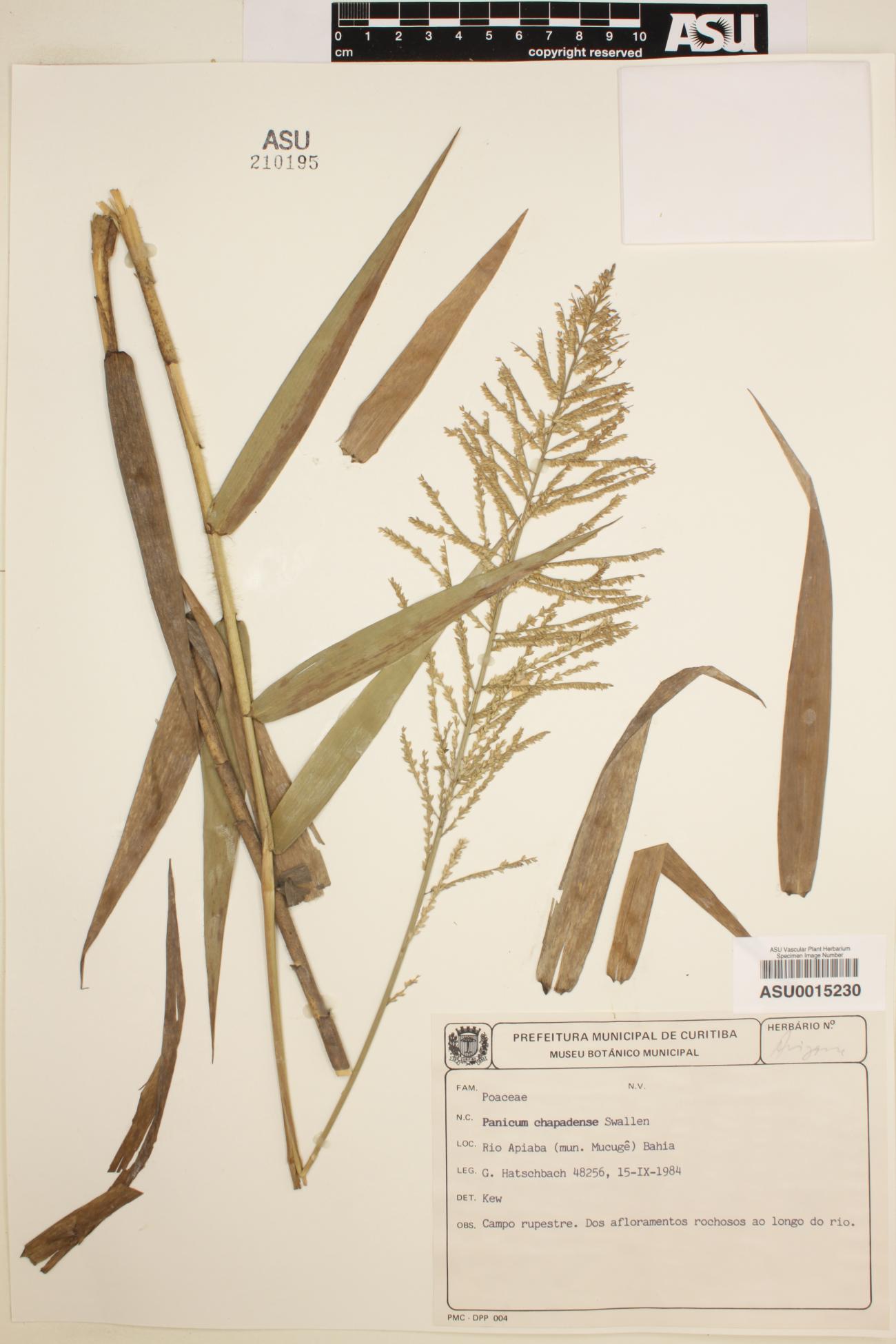Panicum
|
Family: Poaceae |
Spikelets with one perfect terminal fl, lanceolate or fusiform to ovoid, obovoid, or globose, usually somewhat compressed dorsiventrally and biconvex; first glume very short or minute and usually scarious or membranous, or in some spp. nearly as long as the second; second glume about as long as the spikelet, herbaceous, green or colored, often prominently nerved; sterile lemma similar to the second glume, enclosing a palea and sometimes a staminate fl; fertile lemma indurate, usually white or pale and smooth or shining, veinless (or sometimes with 5-7 evident veins at full maturity), the margins inrolled over the edges of the indurate or membranous palea, the apex typically obtuse; ligule in most spp. a band of hairs, or obsolete; spikelets usually small, in panicles or spike-like racemes. 500, cosmop. (Dichanthelium) The spp. of subg. Dichanthelium, and especially spp. 21-34, form an intergrading group in which the taxonomic limits are difficult to discern and are still debatable. The flag-lf referred to in the descriptions of some spp. of subg. Dichanthelium is the uppermost lf of the culm. Gleason, Henry A. & Cronquist, Arthur J. 1991. Manual of vascular plants of northeastern United States and adjacent Canada. lxxv + 910 pp. ©The New York Botanical Garden. All rights reserved. Used by permission. |

